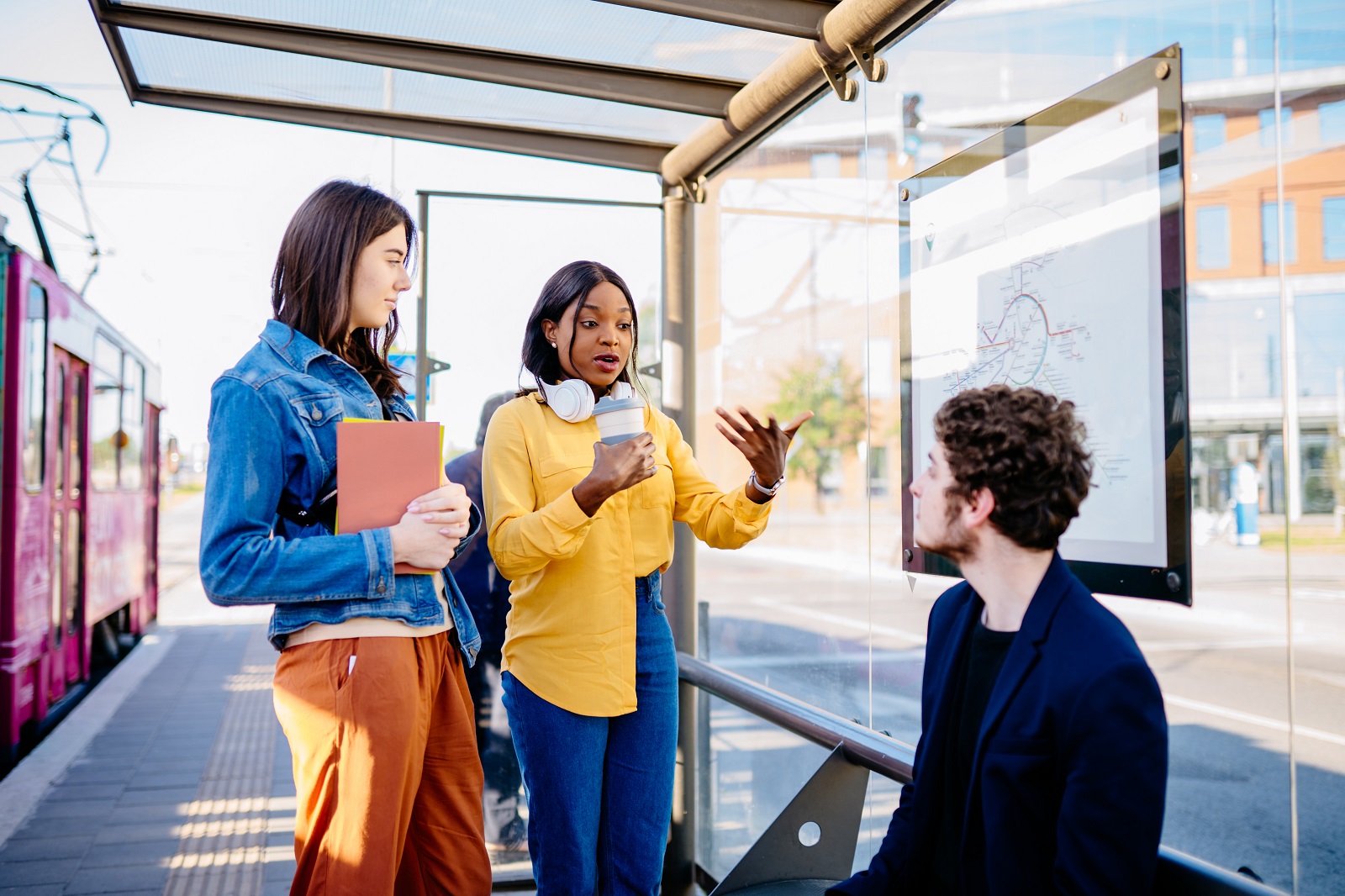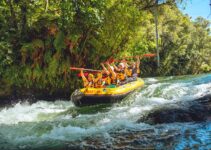Traveling to a non-English-speaking country can be an enriching and eye-opening experience. However, the language barrier can sometimes be challenging, affecting your ability to fully immerse yourself in the local culture. This guide offers practical tips and strategies to help you navigate language barriers, ensuring a more enjoyable and less stressful trip.

Image Credit: Shutterstock / Iryna Inshyna
Encountering language barriers can sometimes lead to both challenging and frustrating situations. It’s important to approach these moments with patience and a sense of humor. Keeping a light-hearted attitude when misunderstandings occur can significantly alleviate stress for you and the person you’re communicating with. Remember, making mistakes while learning a new language is perfectly normal. These errors are not just inevitable; they’re a crucial part of learning. Each mistake provides a valuable learning opportunity and can even lead to humorous exchanges that enrich your travel experience. Patience with yourself and others during these times is key. It helps create a more relaxed environment conducive to learning and understanding, ensuring that language barriers become less of an obstacle and more of an engaging aspect of your cultural journey.
Learning Basic Phrases

Image Credit: Shutterstock / Lemon Tree Images
Starting with basic phrases in the local language is a crucial first step in your travel preparations. Focus on learning simple greetings, common questions, directions, and essential phrases, especially those useful in emergencies. This initial effort, even if it’s just a handful of words and phrases, can significantly enhance your travel experience. Using the local language, even in a limited capacity, demonstrates respect for the culture. It often leads to more positive and helpful interactions with the locals. They typically appreciate the effort you make to speak their language, which can open doors to more authentic experiences and assistance you might not have had access to otherwise. Remember, your attempt to communicate in the local language is a gesture of goodwill and an important step in bridging cultural gaps.
Insider’s Tip
Carry a small phrasebook or a language translation app on your phone.
Using Technology

Image Credit: Shutterstock / pandpstock001
Technological advancements have made overcoming language barriers during your travels more manageable than ever. Translation apps, readily available on your smartphone, can provide you with instant translations, making them an invaluable tool for navigating complex conversations in non-English speaking countries. These apps are beneficial when you find yourself in situations that require a clear understanding or when you need to express something more complicated. Moreover, many of these apps have a feature that allows you to translate text from images. This is especially handy when you’re trying to read signs, menus, or any written information that’s in a foreign language. Simply take a photo using the app, which will translate the text. This feature makes your travel more convenient and helps you avoid potential misunderstandings, ensuring a smoother and more enjoyable experience in a new country.
Insider’s Tip
Download offline language packs on translation apps for use in areas without internet access.
Non-Verbal Communication

Image Credit: Shutterstock / Ground Picture
Non-verbal communication, encompassing gestures, facial expressions, and body language, significantly bridges language barriers. These silent cues can often convey messages more powerfully than words. However, you need to be mindful that certain gestures can have varying interpretations across different cultures. What might be a positive gesture in one country could potentially be offensive in another. Despite these differences, some forms of non-verbal communication are universally understood and appreciated. For instance, a genuine smile and a polite demeanor are almost always seen as friendly and welcoming gestures. They can go a long way in fostering goodwill and understanding, especially when verbal communication is challenging. So, when you find yourself at a loss for words, remember that a warm smile and courteous behavior can effectively bridge the communicative gap.
Insider’s Tip
Observe local non-verbal cues as they can vary significantly from one culture to another.
Taking Language Classes

Image Credit: Shutterstock / Pixel-Shot
Consider enrolling in language classes if your travel plans involve a longer stay in a non-English-speaking country. Many destinations cater to travelers by offering language courses designed to suit various proficiency levels. Engaging in these classes is more than just about improving your language skills; it’s an enriching experience that opens up numerous opportunities. You will enhance your ability to communicate in the local language and find yourself in a social setting where you can connect with fellow travelers. Perhaps more importantly, these classes often provide a platform to interact with locals, offering a deeper insight into the culture and lifestyle of the place you’re visiting. This interaction isn’t just educational; it’s a chance to build friendships and understand the nuances of the local language in a way that self-study or apps cannot provide.
Insider’s Tip
Engage in language exchange meetups where you can practice with native speakers.
Cultural Immersion

Image Credit: Shutterstock / David Bokuchava
Immersing yourself in the local culture is a highly effective strategy for learning a new language. To truly embrace this approach, actively seek out interactions with locals. Engaging in conversations, even simple ones, can significantly enhance your language skills. Additionally, immerse yourself in the local media. Watching TV shows and listening to music in the local language can improve your listening skills and familiarize you with colloquial expressions and slang. Reading local newspapers or magazines, even if it’s challenging at first, can also be beneficial. It helps understand the language’s written form and provides insights into current events and cultural nuances. The more you surround yourself with the language in its natural context, the faster and more naturally you will absorb it. This method of learning not only improves your language skills and deepens your understanding and appreciation of the culture.
Insider’s Tip
Stay with a local family or in community-based accommodations to immerse yourself in the language.
Patience and Humor

Image Credit: Shutterstock / Iryna Inshyna
Encountering language barriers can sometimes lead to both challenging and frustrating situations. It’s important to approach these moments with patience and a sense of humor. Keeping a light-hearted attitude when misunderstandings occur can greatly alleviate stress for you and the person you’re communicating with. Remember, making mistakes while learning a new language is perfectly normal. These errors are not just inevitable; they’re a crucial part of learning. Each mistake provides a valuable learning opportunity and can even lead to humorous exchanges that enrich your travel experience. Patience with yourself and others during these times is key. It helps create a more relaxed environment conducive to learning and understanding, ensuring that language barriers become less of an obstacle and more of an engaging aspect of your cultural journey.
Insider’s Tip
Keep a sense of humor about misunderstandings, and be patient with yourself and others.
The Bottom Line

Image Credit: Shutterstock / Iryna Inshyna
Navigating language barriers while traveling in non-English-speaking countries is fundamental to the journey. It’s an experience that calls for some preparation, a good deal of patience, and an openness to learning and adapting. When you face these language challenges head-on, you’re trying to make your trip easier and opening doors to more profound cultural experiences. Engaging with a new language allows for more meaningful interactions with locals, offering insights into their way of life and perspectives. Learning and adapting to communicate can significantly deepen your understanding of the world’s diverse cultures. It’s important to remember that your efforts to overcome language barriers are often met with appreciation from locals. These efforts can lead to some of your travels’ most memorable and rewarding experiences, creating connections that transcend language differences and enrich your understanding of the global community.
The post Break Language Barriers with These Essential Travel Tips first appeared on Mechanic Insider.
Featured Image Credit: Shutterstock / pathdoc.
For transparency, this content was partly developed with AI assistance and carefully curated by an experienced editor to be informative and ensure accuracy.



